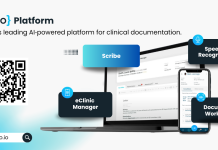Iqbal Singh Bedi, Managing Partner at Intelligens Consulting details how private 5G can align with Labour’s vision for a healthier, smarter future
This article highlights how the deployment of private 5G networks in social housing can address persistent issues like dampness and mould, reduce maintenance costs, and enhance healthcare delivery through telehealth services, thereby alleviating NHS burdens.
Supported by government investment, private 5G can also provide low-cost, high-speed broadband, reducing the digital divide and improving operational efficiencies for local authorities. By leveraging private 5G, local authorities can align with Labour’s vision for technological advancement and comprehensive public service delivery, achieving significant social and economic benefits.
What do the King’s Speech and advanced wireless networks have in common?
The King’s Speech – the first of the new UK Government – outlined plans to reform the NHS to reduce its current burden. This pressing issue requires innovative solutions to improve the quality and level of care provided to its patients. Concurrently, although not mentioned in the speech, a key Labour manifesto commitment was to achieve nationwide 5G coverage by 2030, ensuring that all regions, including rural and underserved areas, benefit from high-speed mobile connectivity.
According to recent Ofcom data 5G coverage across all four mobile network operators is well below that currently achieved for 4G. Additionally, social housing, often managed by local authorities, continues to grapple with persistent issues like dampness and mould, affecting residents’ health and quality of life.
Bringing these points together, there is a significant opportunity for advanced wireless networks, such as private 5G, to play a crucial role. By leveraging private 5G, we can enhance healthcare delivery, improve connectivity in underserved areas, and address housing quality issues through smart home technologies and real-time monitoring, ultimately creating a more connected and efficient system to tackle these challenges comprehensively.
But – how can we speed up the 5G rollout, solve damp and mould issues in social housing, reduce costs, and achieve Labour’s ambition to bring the NHS back from the brink of collapse? The low levels of 5G coverage, lack of real-time monitoring and preventive measures in social housing and the overburdened NHS are seemingly unrelated issues, but they all require innovative solutions.
Advanced wireless networks have a role, and below, we explore the case for private 5G networks across a range of scenarios. A private 5G network is a dedicated, high-speed wireless network designed for exclusive use by specific organisations or communities, offering secure and reliable connectivity.
50% to 70% maintenance cost reduction
By deploying private 5G networks and IoT sensors in social housing, local authorities can implement real-time monitoring and preventive measures to combat damp and mould. This approach significantly reduces maintenance costs and legal liabilities.
For example, one local authority with approximately 30,000 social housing properties could face a 15-year repair bill of £38 million for damp and mould issues. A modest capital and revenue investment in private 5G connectivity could result in substantial savings of the order of 50% to 70% through preventive maintenance.
Not only does this reduce cost leakage, but it also frees up officer time by reducing the need for inspectors to visit sites and enhances their overall productivity.
Enhancing healthcare delivery
In addition to preventing dampness and mould, investment in private 5G networks can also help reduce the burden on the NHS by making telehealthcare more of a reality and freeing up NHS beds.
Telehealth services supported by private 5G can improve healthcare delivery in social housing. In one recent local authority case, reducing hospital admissions by 5% (3,300 out of 66,000 annual admissions) through telehealth could save £5.7 million per annum, based on an average stay of five days at £345 per day, based on government figures.
These savings reflect direct costs associated with hospital bed usage and have additional benefits, such as improved patient outcomes and reduced readmission rates.
Driving digital inclusion and economic impact
In addition to reducing the NHS burden and reducing dampness and mould, private 5G can also deliver social and economic impact and act as a stimulus to deliver investment in public 5G coverage.
Intelligens Consulting partnered with an East England Council and a neutral host wireless operator to demonstrate how local authority investment in private 5G can enable a connected tourism experience and unlock investment in public 5G networks. This project highlights the dual advantage of cost savings and social good, showcasing how public 5G networks can be expanded for better service delivery.
Additionally, private 5G networks can provide low-cost, high-speed broadband access for tenants who struggle to afford even social tariffs, which start at £10 per month. This connectivity reduces the digital divide, ensuring all residents have access to essential online services.
Moreover, it allows local authorities to transact directly and electronically with tenants, resulting in further efficiencies in communication and service delivery. This enhanced connectivity supports digital inclusion and operational efficiency, benefiting both residents and local authorities.
Government should unlock investment and break down silos
However, the deployment of private 5G networks was only possible with government investment. Local authorities, often cash-strapped, are unlikely to take such significant steps without substantial support from the government. While it is crucial to ensure these initiatives do not require ongoing financial aid, there is a strong financial case for the government to unleash capital spending on private 5G across more of the UK.
Moreover, not all local authorities will immediately recognise the benefits of a better-performing NHS, as they operate as separate organisations. Therefore, we advocate for more collaborative efforts between health and local authorities. By working together for the common good, rather than being limited by their siloed approaches, both sectors can achieve more comprehensive and effective outcomes for the UK.
One technology – many winners
Deploying private 5G networks and IoT sensors in social housing is a strategic move that addresses immediate issues while aligning with Labour’s broader vision for a technologically advanced future. By taking proactive steps, local authorities can reduce maintenance costs, enhance healthcare delivery, and achieve significant social and economic benefits. Accelerating the rollout of private 5G in social housing is not just a technological upgrade but a transformative approach to public service delivery, reflecting Labour’s commitment to a healthier, smarter future. One solution, many winners.











